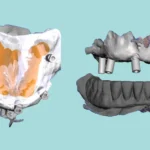That dreadful phone call after an extraction? It’s the one where your patient tells you, “I’m in agony, and painkillers aren’t even touching it.” Immediately, your mind jumps to that diagnosis we all dread: Alveolar Osteitis, more commonly known as a Dry Socket. This condition isn’t just excruciating for the patient; it’s a significant headache for you, the practitioner, too. That’s precisely why this article will zero in on how to prevent this nightmare from happening in the first place, offering clear, actionable steps.
What Exactly Is a Dry Socket? (A Quick Refresher)
Simply put, after a tooth extraction, the empty space—the socket—is supposed to fill with a blood clot. This vital clot protects the underlying bone and serves as the foundation upon which the body builds new bone. A Dry Socket occurs when this clot either fails to form, becomes dislodged, or dissolves prematurely (a process called fibrinolysis). The unfortunate consequence? The bone is left exposed to air, food debris, and bacteria, leading to absolutely severe pain.
Dry Socket Prevention Protocol: Practical Steps for Your Clinic
You must approach every extraction site as if it were a crime scene that needs meticulous cleaning and securing before your patient walks out the door.
1. Confirm Complete Extraction
This is perhaps the simplest, yet most crucial step. After you’ve extracted the tooth, hold it in your hand and inspect it thoroughly. Is the root intact? Does any part look fractured or incomplete? You absolutely must ensure there are no remaining roots inside the socket. Any residual fragment acts as a foreign body, disrupting proper clot formation.
Tip: If you hear a distinct “crack” or feel a fracture during the procedure, or if the root morphology simply doesn’t look right, never ignore it. You need to inspect the socket very carefully under strong illumination and utilize a root tip pick to confirm it’s completely empty.
2. Differentiating Fractured vs. Resorbed Root
It’s quite common to encounter primary teeth or teeth with chronic inflammation that present with root resorption. The key to differentiation here rests on two critical factors.
Pre-operative Radiograph: This is your most invaluable tool. You must have thoroughly examined it beforehand, understanding the root’s morphology before you even touch the case.
Sound and Feel: A fractured root typically produces a distinctive sound and a palpable sensation during extraction.
Edge Morphology: A resorbed root’s edge will usually feel rough and irregular. In contrast, the edge of a fractured root tends to be sharp and smooth.
3. Thorough Socket Debridement
Once you’ve confirmed the socket is empty, your next mission is to meticulously clean out any debris within it. Grab a sharp curette and carefully debride all the socket walls. What are you looking for?
-
Calculus: If the tooth had significant calculus, small fragments might have fallen into the socket.
-
Fractured Restorations: Pieces of amalgam or composite could have broken off and lodged inside.
-
Granulation Tissue: In cases of chronic infection, the area will often be filled with inflammatory granulation tissue that must be completely removed to allow for healthy clot formation.
4. Remove Sharp Bony Spicules
During extraction, especially with molars where roots diverge, a piece of the interradicular bone might fracture. If these sharp fragments are left behind, they act like tiny thorns, impeding proper healing.
After extraction, gently palpate the alveolar ridge with your finger. If you detect any sharp bony edges, they must be removed. Use a bone rongeur to excise them or a bone file to smooth them down. Your objective is to leave a smooth, rounded surface.
5. Thorough Socket Irrigation
This is the final step in ensuring cleanliness. Use a syringe filled with sterile saline solution and meticulously irrigate the socket. This washes away any tiny fragments or old blood. This irrigation ensures the blood clot will begin to form on a completely pristine site.
6. Proper Pressure Pack with the Right Material
This crucial step helps to keep the blood clot securely in place. It’s always best to use gauze, not cotton. Cotton fibers can adhere to the clot, and when the patient attempts to remove it at home, they might inadvertently dislodge the clot, undoing all your careful work. The size of the gauze pack should be substantial enough for the patient to bite down on, creating effective pressure, yet not so large that it exerts undue pressure on adjacent teeth.
Conclusion: Prevention Starts in Your Clinic
A Dry Socket isn’t simply a stroke of bad luck. A very significant portion of its etiology is directly linked to the extraction steps themselves. By giving every case the thorough cleaning and securing it deserves, you ensure better and faster healing for your patient, drastically reducing the chances of a Dry Socket occurring. Always remember: your job doesn’t end the moment the tooth is in your hand. Your job truly finishes when you leave behind an optimal environment for healing.





















